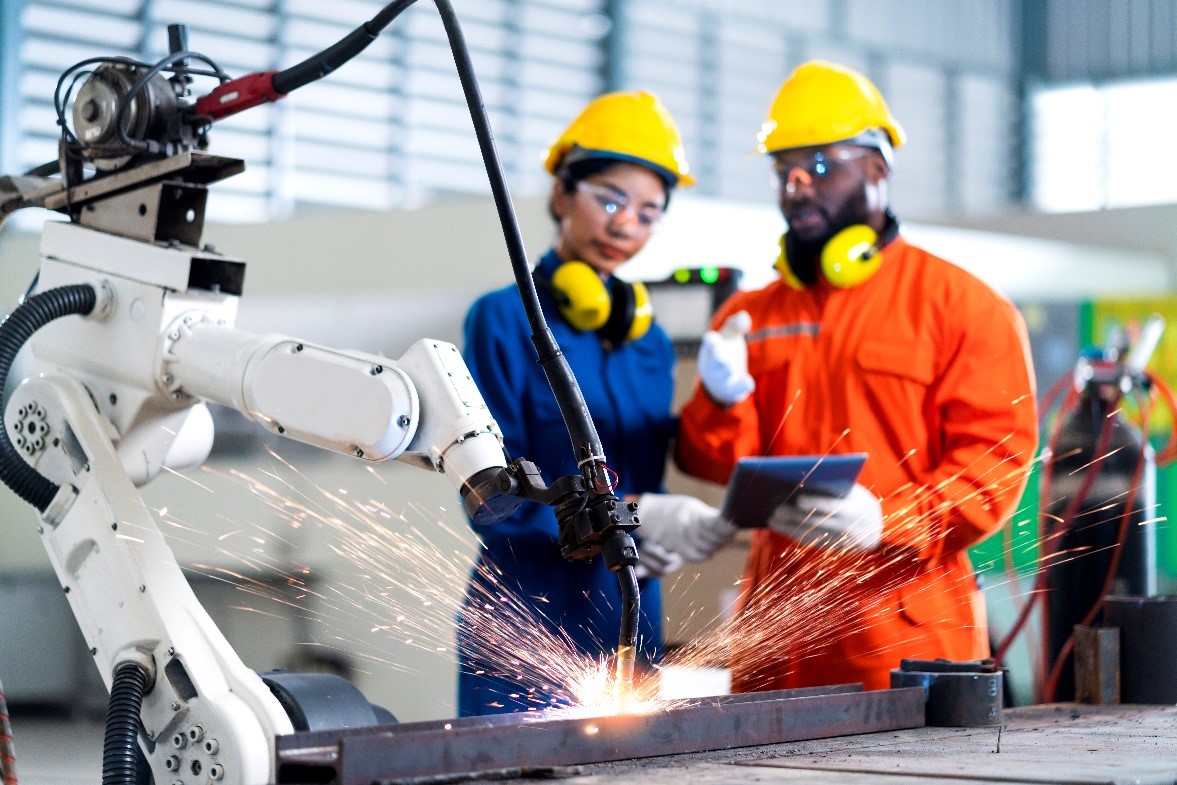Introduction: robots have been used by humans for a while now. They can do tasks automatically, faster, and in extraordinary ways. Welding is one of those tasks assigned to robots as robotic welding has taken on major significance. Robotic welding uses special programmable tools like robots to carry out the entire welding process. The welding robots automate & mechanize all the welding processes, holding the object & welding the specific area. Robotic welding is highly relevant to high-tech machinery like aircraft, spacecraft, automobiles and shipbuilding industries.
The requirement of exact welding dimensions at fast speeds makes robots highly effective in welding critical machine parts.
Evolution of Robotic Welding
Whether it’s robotic arc welding or robotic spot welding, the sophisticated functionality is complex & costly. Welding robots are machines that need constant monitoring despite their abilities.
1. Industrial robot use has been in existence since the 1960s. Industrial robots back then were applied to accomplish several tasks faster that took humans too long to finish. Today, their focus is on efficiency & productivity with impeccable speed.
2. The first robotic welding system in 1962 was by George Devol & Joseph Engelberger of Unimation was adopted by General Motors Corp in its factory for spot welding in automobile manufacturing.
3. However, it wasn’t until the 1980s that robotic welding took off with mass-producing automobile sectors, aircraft manufacturing & spacecraft engineering & shipbuilding yards & industries.
4. Today, robotic welding systems are nearly spread out to all vital machine parts engineering sectors & industries globally. They are part & parcel of high-technology industries with advanced system engineering.
5. Heavy industrial metal craft engineering with repetitive tasks & fast manufacturing processes apply robotic welding at some stage in the production process.
Main Robotic Welding Processes & their Application
1. Arc welding – uses an electric arc to create heat that melts & joins the metals.
2. Spot/Resistance welding – application of heat & pressure to the weld area using copper alloy electrodes.
3. Laser welding – use of a highly concentrated beam of light at a specific area until it absorbs the light & is highly energetic.
4. TIG welding – tungsten inert gas or gas tungsten arc welding uses a pointed tungsten electrode & an inert gas atmosphere of helium or argon to weld.
5. MIG welding – metal inert gas welding uses a nonstop solid wire electrode that is heated & fed on the weld area using a welding gun.
6. Plasma welding – uses a plasma arc between the base metal & the electrode in the welding process.
Major Benefits & Transformations Robotic Welding Has Brought
1. Higher industrial productivity & efficiency
2. Enhanced industrial safety with fewer personnel injuries
3. Improved work & project start & finish dates/timing
4. Low production costs overall & cost of labour
5. Better quality assurance
6. Elimination of lags in the production process
7. Better tracking & estimation of the production costs.
8. Elimination of raw material & resource wastage.
However, as the benefits seem to outweigh the losses, there are actual costs & disadvantages to robotic welding. These include:
1. Costly as precision programmable welding robots aren’t cheap.
2. They need trained & expert programmers to function effectively.
3. Wrong object placements won’t stop welding robots.
4. They are limited to a few welding techniques & types.
Why Robotic Welding Still Matters & is Indispensable
The gain in science & technology of robotic welding is more than what weighs the technology down. All that is because:
1. Cost-effective with labour cost reduction.
2. Fast, reliable & efficient in multiple repetitive welding tasks.
3. Ushered in advanced robotics, sensors & applications technology.
4. Multi-heavy industry usable for precise & specific welding tasks.
5. Less welding mistakes, time & material wastage
6. Robotic welding enables difficult & complicated high-tech welding spots as programmable robots reach every position.
Conclusion
The evolution of welding from the blacksmith furnaces to modern refined robotic welding technologies is a leap in efficiency & precision industrial manufacturing. With https://www.strategymrc.com/, learn about robotic welding over the years to what it is today.
